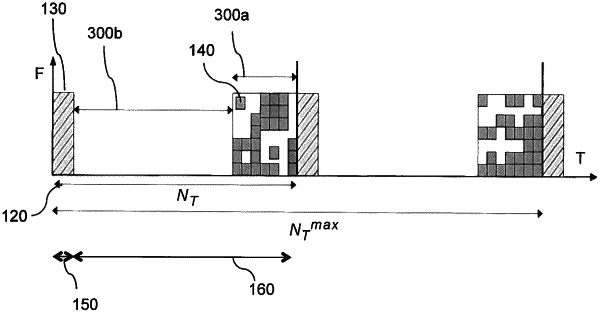| CPC H04W 56/00 (2013.01) [H04W 72/0446 (2013.01)] | 9 Claims |

|
1. A method implemented by a device and comprising:
controlling a base station of a radiocommunications network multiplexing data in time intervals, each time interval comprising at least a synchronization time portion and at least a user data time portion organized in time-distributed and frequency-distributed resource blocks, each time interval being formed of a plurality of time slots, wherein the controlling comprises, for at least one of the time intervals:
dividing said user data time portion into at least two sub-portions, including an active time sub-portion, capable of grouping together resource blocks to be sent out, and a single inactive time sub-portion that contains no resource blocks used, said active time sub-portion being placed in time immediately before and/or after a synchronization time portion, the synchronization time portion and the active time sub-portion being contiguous to form a time duration during which the base station is out of sleep mode so as to maximize the single inactive time sub-portion between two consecutive synchronization time portions and during which the base station may be put in the sleep-mode;
putting said base station into sleep-mode for at least one part of a duration of said inactive time sub-portion; and
modifying a total duration of said at least one time interval, comprising modifying a number of the time slots forming said at least one time interval so as to be an integer sub-multiple of a maximum number NT(max) of time slots, said maximum number NT(max) of time slots corresponding to a maximum duration between two consecutive synchronization time portions.
|